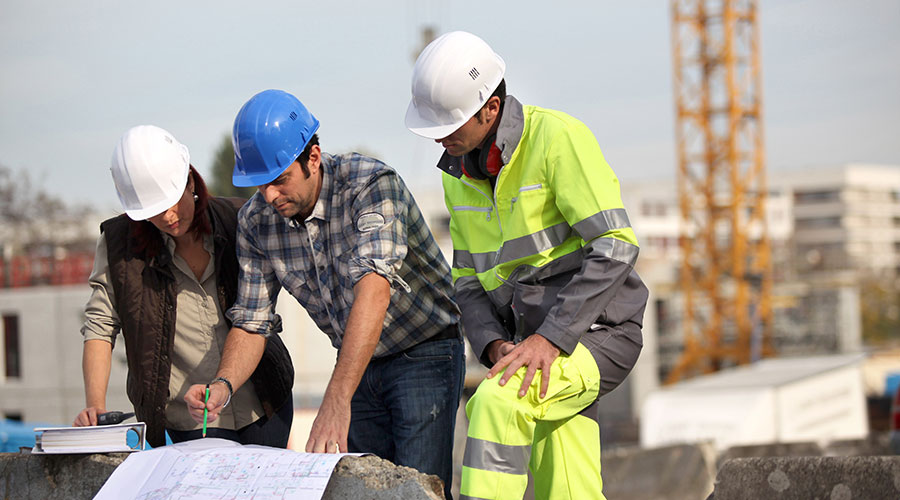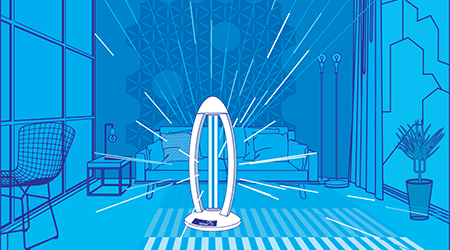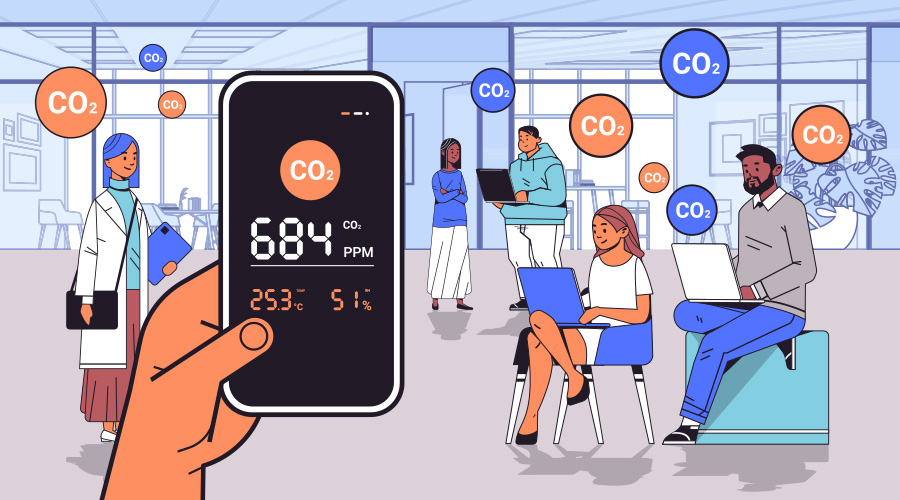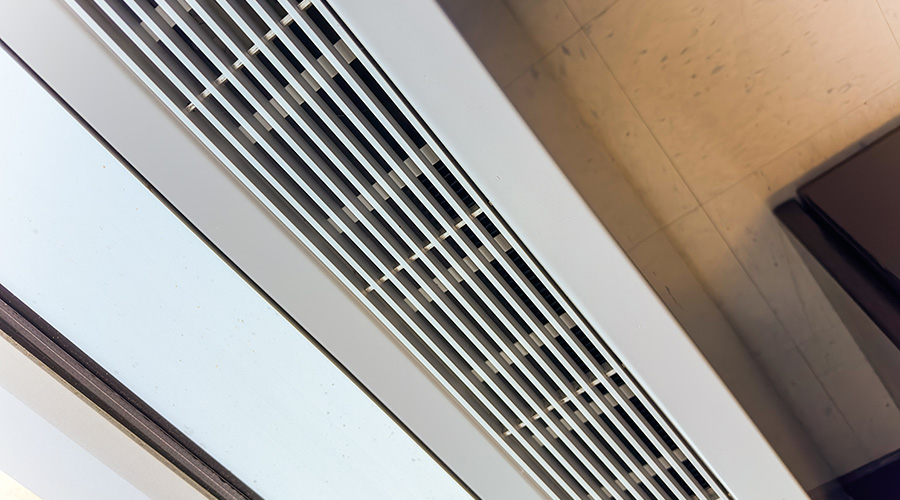Secondary IAQ Considerations for Reopening: Humidity, UV
As buildings begin to reopen, secondary IAQ strategies beyond the standard measures are gaining increased importance. Here are some best practices.
Humidity: Targeting levels between 40 percent and 60 percent is both beneficial to the human immune response (by increasing the effectiveness of our physiological barriers to viruses) and detrimental to the viability of many viruses (by creating a droplet/droplet nuclei environment less conducive to viruses), including SARS-CoV-2 and Influenza. However, in addition to an increase in energy consumption, increasing humidity levels can create situations leading to moisture damage and mold, depending on the climate, building envelope, and HVAC system. Implementing this as a strategy must be carefully thought through.
UV at HVAC Units: This refers to the use of UV lamps at the air handling unit itself to sterilize the air stream as it passes through the air handling unit. Centralized air disinfection strategies like this are beneficial, but are less effective than in-room strategies. They do relatively little to directly protect occupants in the same room with an infectious source. In-room strategies in essence reduce the exposure time compared to centralized strategies. While that same general criticism applies to building system filtration, building filtration also removes particulate matter, further positively impacting human health.
Upper Room UVGI (ultraviolet germicidal irradiation): This refers to traditional applications consisting of perimeter or wall mounted UV-C fixtures (typically 254 – 280 nm), mounted high in a space, used to irradiate an upper zone while shielding the lower occupied portion from exposure. Significant research exists demonstrating the effectiveness of this type of application, but it can be costly to implement, requires specialized expertise to design, requires additional training for facilities staff to operate and maintain, and presents a small risk to facilities staff and occupants if installed or operated improperly. More widespread use of UVGI could also have a negative impact in the built environment’s microbiome, something we’re only now beginning to look at.
Mitigating risk during reopening and beyond
The question then becomes how to determine the best contextual solution drawn from these primary and secondary strategies to mitigate risk as we continue to reopen. Generally, it’s important to gain an understanding of how your building systems are currently performing. Are your outside air dampers locked shut even though the building management system shows them open? What actual ventilation rates are you getting in your various spaces? What’s the maximum ventilation rate you can achieve with your system?
There are multiple sources of information out there to help you gain this understanding as well as navigating how to implement these strategies. Some of these resources include the ASHRAE COVID-19 (CORONAVIRUS) Preparedness Resources, the 5 Step Guide to Checking Ventilation Rates in Classrooms, the AIA Re-Occupancy Assessment Tool, and the REHVA COVID-19 Guidance. You may also need to engage consulting engineers, commissioning agents, test and balance consultants, among other experts.
In addition to these resources, there are also freely available risk calculator web applications that can be used to assess the relative benefit of various strategies for reducing the probability of infection for your specific building. One of these is BranchPattern’s Facility Infection Risk Estimator. Taking things like mask wearing, vaccination rates, activity levels, age, etc., into account along with existing and proposed ventilation rates, filtration levels, the use of portable HEPA filter units, etc., you can estimate how effective various strategies will be at reducing the probability of infection. You can also use these tools to determine and then post maximum exposure times and a maximum number of occupants relative to the strategies employed for a given space. The results can also be used to communicate the importance of various strategies (like mask wearing) as well as demonstrate the additional safety achieved by implementing the risk mitigation strategies.
By focusing on these primary strategies (and secondary strategies to a lesser extent) to mitigate risk from SARS-CoV-2 infection, facility managers and building owners are also setting themselves and their occupants up for success beyond the pandemic. This essentially readies facilities for future airborne epidemics and pandemics. It also decreases the risk from other seasonal airborne viruses, like Influenza. And the reduction in TVOCs, particulate matter, carbon dioxide, etc. within our built environments resulting from these strategies will have a wide range of positive health and productivity benefits. Everything from increased cognitive performance to reductions in cardiovascular disease and various cancers. Not to mention the positive influence that increased satisfaction of indoor air quality can have on occupant complaints, engagement, and workplace satisfaction.
Related Topics:














